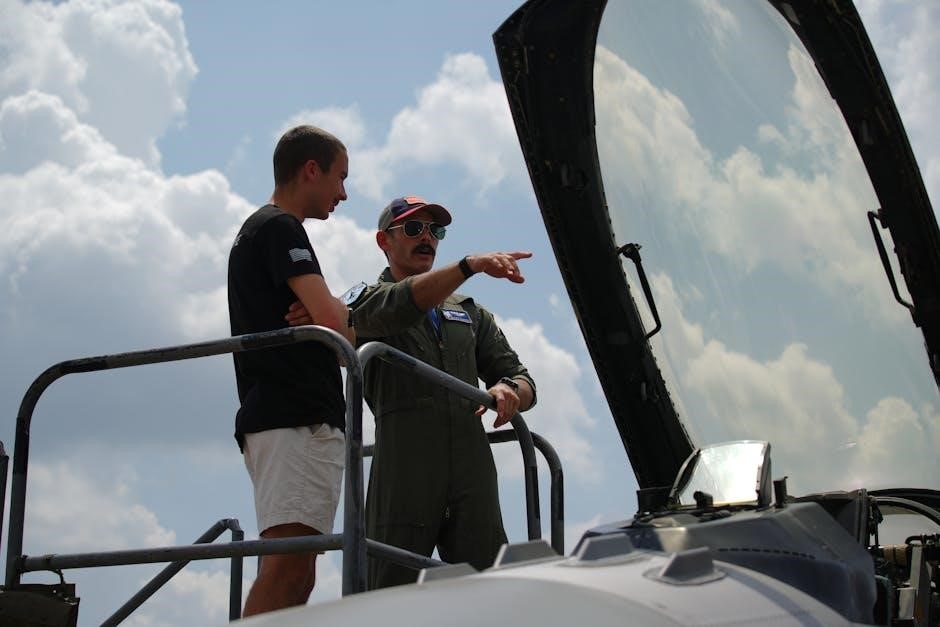The Navy instruction establishes policy for casualty reporting messages
Purpose of CASREP
The purpose of a CASREP is to report equipment degradation to the operational commander, impacting readiness, and is defined as a message report submitted by the commanding officer of a ship or shore activity when there is a significant casualty affecting equipment essential for assigned missions and tasks. This report is crucial for maintaining operational effectiveness and ensuring the Navy’s ability to perform its duties. The CASREP process is designed to provide timely and accurate information to support decision-making and resource allocation. By reporting casualties, the Navy can identify and address equipment failures, reducing downtime and improving overall readiness. The purpose of CASREP is to facilitate effective communication and coordination between units, enabling the Navy to respond quickly and efficiently to emerging situations. This enables the Navy to maintain its operational edge and accomplish its mission. The CASREP serves as a vital tool for Navy operations.
Policy and Procedures
Navy instruction establishes policy for casualty reporting messages clearly online
Applicability and Scope
The instruction applies to all Navy programs and procurement activities, including new weapons systems and modernization programs under NAVSEA technical authority, throughout the in-service life of ships and equipment, and is used to report conditions that may reduce capacity to train personnel, with the goal of providing accurate operational equipment status, and it includes all Hull, Mechanical, and Electrical procurements, and all modernization programs, and applies to all Navy Weapons System programs, and is used to support training activities in the NETC enterprise, and requires up-to-date information, and is used to report equipment degradation, and is essential for the performance of assigned missions and tasks, and is used to establish policy and procedures for reporting conditions, and is used to complement other reporting processes.

Reporting Requirements
The Navy requires timely and accurate reporting of equipment degradation and casualties affecting operations and readiness always.
Types of Reports
The CASREP instruction outlines various types of reports that are required to be submitted by Navy units, including initial and follow-up reports.
These reports provide critical information on equipment casualties and degradations, and are used to track and manage readiness and maintenance activities.
The types of reports include CASREP messages, which are submitted by commanding officers to report significant casualties affecting equipment essential for assigned missions.
Additionally, the instruction outlines the requirements for submitting reports on impaired training and education, which are used to identify and mitigate issues affecting training activities.
The reports are used to support decision-making and resource allocation, and are critical to ensuring the effective operation and maintenance of Navy equipment and systems.
The instruction provides guidance on the content and format of the reports, as well as the timelines for submission.

Responsibilities
Commanding officers are responsible for reporting equipment casualties and degradations accurately always.
Consultation and Advice
Consultation and advice are essential components of the CASREP instruction navy process.
The Navy provides guidance and support to units and commands to ensure accurate reporting and compliance with regulations.
Units can consult with technical experts and advisors to resolve equipment casualties and degradations.
The consultation process involves reviewing and analyzing CASREP reports to identify trends and areas for improvement.
Advice is provided on safe engineering practices and procedures to prevent or minimize equipment failures.
The goal of consultation and advice is to enhance readiness and operational effectiveness by ensuring that units have the necessary support and guidance to report and resolve equipment casualties and degradations efficiently.
Effective consultation and advice are critical to the success of the CASREP instruction navy process, and units are encouraged to seek guidance and support whenever needed to ensure compliance and accuracy.

Current Guidance
Navy’s current guidance is directed in Commander instructions and references.
Navy Type Navy Guidance
The Navy Type Navy guidance is a specific type of guidance that applies to Navy units and personnel. This guidance is outlined in various instructions and references, including the Commander, Naval Surface Forces Pacific/Commander, Naval Surface Forces Atlantic Instruction. The guidance provides detailed information on how to report casualties and equipment degradations, as well as how to maintain accurate records and submit reports in a timely manner. The Navy Type Navy guidance is an important part of the overall casualty reporting process, as it helps to ensure that the Navy has accurate and up-to-date information on the status of its equipment and personnel. This information is used to make informed decisions about training, operations, and maintenance, and to ensure that the Navy is able to carry out its mission effectively; The guidance is regularly updated to reflect changes in policy and procedure.

Exemptions
Coast Guard cutters are exempt from this instruction with certain exceptions always applied carefully online.
Coast Guard Exemptions
The Coast Guard has specific exemptions from the CASREP instruction, which are outlined in the policy. These exemptions apply to Coast Guard cutters, boats, and shore facilities that already report casualty status through another authorized system. The Electronic Asset Logbook is one such system that is used by the Coast Guard to report equipment status. The exemptions are intended to avoid duplicate reporting and to streamline the process. The Coast Guard is still required to follow certain procedures and guidelines, even if they are exempt from the CASREP instruction. The exemptions are subject to change and may be updated as necessary. The Coast Guard must ensure that they are in compliance with the current policies and procedures. The exemptions are an important part of the CASREP instruction and are used to facilitate efficient reporting.